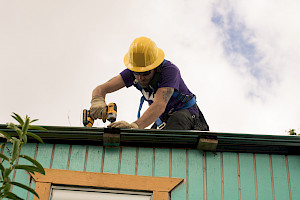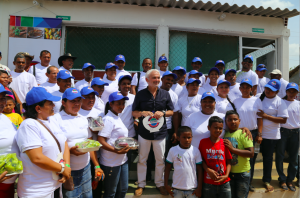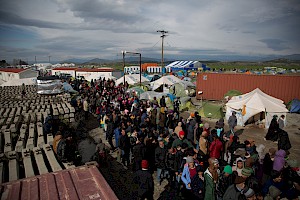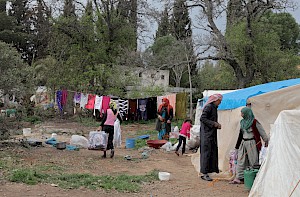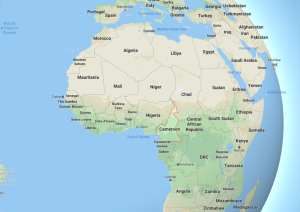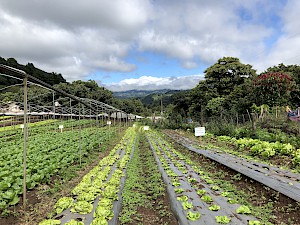Without long-term investment, food aid for Haiti risks being a Band-Aid
September 17, 2021Originally published in PND by Candid on September 9, 2021
The aftershocks of the 7.2-magnitude earthquake that struck Haiti on August 14 are not only being felt by those nearest the epicenter.
The latest disaster not only has left six hundred and fifty thousand people needing immediate assistance but also has exposed the country's more than one million farming families, who depend on a precarious rural economy. While aid agencies are scrambling to distribute the World Food Programme's pre-positioned food and import additional supplies, farmers are facing the possibility of their ready harvests of staple crops going to waste. The result is loss of market opportunity, incomes, and the chance to sustain their livelihoods long enough to support Haiti's economic recovery.
If the lingering effects of the last major earthquake, which displaced 1.5 million people in 2010, are any indication, the full impact could be devastating for the country's food producers, their families, and communities, who lose out twice: first to the damage from the earthquake and then to the subsequent short-term influx of cheap imported food.
Before this latest earthquake, almost half the country, or 4.4 million people, faced food insecurity, while an even greater proportion — including an estimated 90 percent of the rural population — were living below the poverty line. Given that 60 percent of rural families rely on agriculture for their livelihoods, it follows that any shocks that impact food markets will also have a lasting impact on their economic security and well-being.
Conversely, supporting this key sector now and in the long-term is a fast-track way to tackle poverty, hunger, health disparities, and inequality and build resilience to the secondary impacts of natural disasters.
To learn the lessons of 2010, the international community, including donors like USAID, should be making full use of Haiti's existing food system, not circumventing it, to find local solutions to local challenges. At the same time, it should also be issuing a rallying cry for long-term sustainable agricultural investment.
Local food production alone is insufficient to meet today's extraordinary need. The sobering irony is that Haiti needs food aid from the international community now precisely because the international community has underinvested in supporting the country's own food systems in the past.
However, organizations like the W.K. Kellogg Foundation have helped make in-roads over the last decade by supporting the capacity of local NGO networks and social enterprises like Acceso Haiti, which has helped generate more than $5 million in income for farmers since 2014. These nascent food systems need to be leveraged now; otherwise, these gains may be lost for another generation.
Pivoting its network of 5,000 smallholder farmers and procurement infrastructure connecting farmers in Haiti's central plateau to local markets in Port-au-Prince, Acceso was able to source 8,000 lbs of rice, 8,000 lbs of beans, 10,000 kg of peanut paste, and 3,250 bags of bread within days after the earthquake. Working with frontline organizations including World Central Kitchen and CORE, this operation was able to feed more than 30,000 people with locally grown produce.
Supporting farmers as part of the humanitarian response not only helped meet local needs, but also generated local incomes, which are equally important as Haiti rebuilds. But doing so at a greater scale and in future disasters requires relief agencies to rethink their usual disaster procurement approaches and develop ways to integrate quickly with local organizations.
The longer-term purpose of networks like Acceso and others is to demonstrate that developing robust, food systems goes hand in hand with combating poverty and building national resilience before future disasters.
The longer the country continues to receive non-income-generating food aid from abroad, the greater the impact on farmers and the longer it takes for Haiti to develop a self-sustaining agricultural sector. For farmers to be able to sell their produce, Haiti needs to develop functioning and profitable markets, which includes operational infrastructure that supports entire supply chains — from producers to buyers and suppliers.
To that end, longer-term development support must go beyond focusing solely on building farmer capacity — which has seen mixed outcomes to date — and also invest in rural logistics and food-processing facilities in smallholder productions areas. It is this kind of practical philanthropy that will create long-term jobs and value-added products, enabling farmers to compete sustainably with imports from large-scale operations and export to major markets like the United States.
International support for more functional food systems is even more important given that, in the last twenty years, Haiti has been among the top three countries most severely affected by the impacts of climate change, which is only likely to worsen and continue to undermine attempts to build resilience.
Yet, with the right kind of support and access to technologies, farmers have a better chance at adapting to new and extreme conditions, thereby improving self-sufficiency in good times and securing food supplies for hard times. Vulnerable families who need food now will also need food throughout Haiti's recovery, and the only way to guarantee supplies after the aid efforts end is to support the country's agriculture sector.
Nothing can prevent an earthquake or its devastating aftermath, but with preemptive investment and a strategy to support the rural economy, the humanitarian aftershocks can be significantly reduced.

